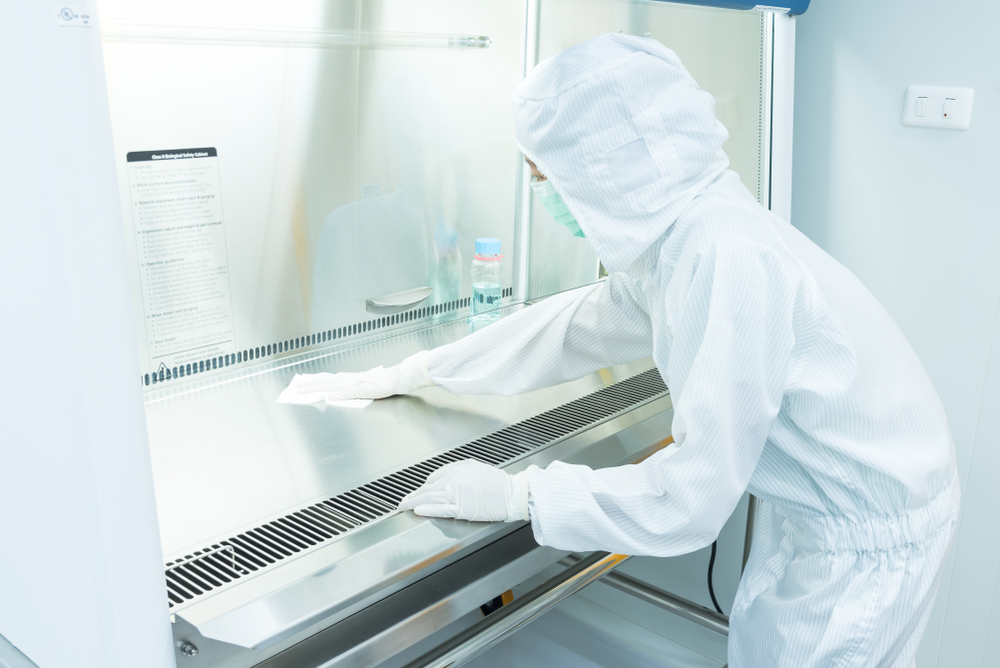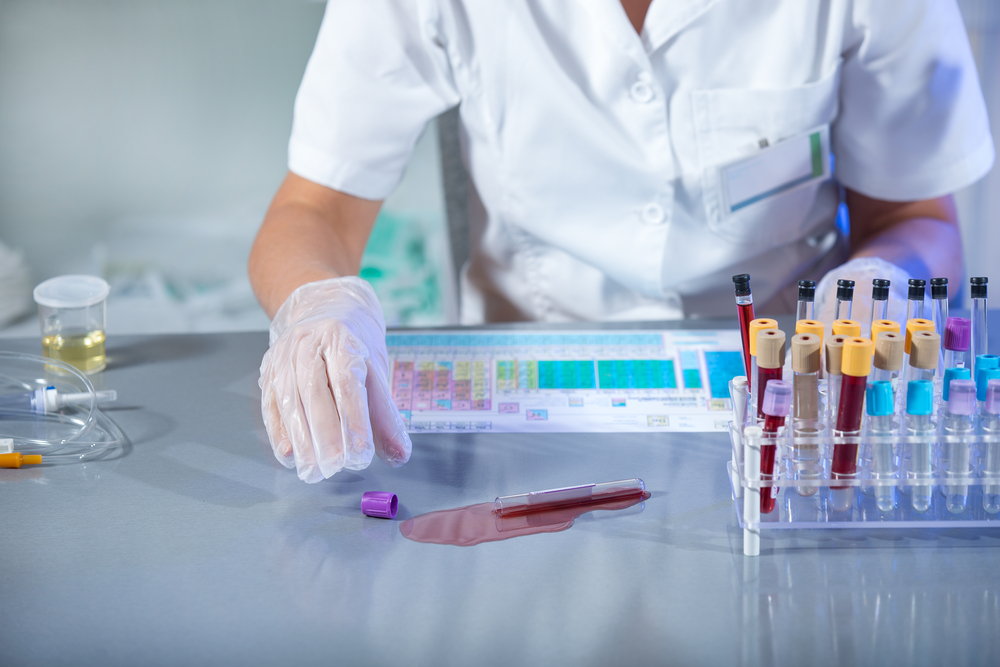No matter how careful you are in the lab, spills are inevitable. And unfortunately, chemical spills are not uncommon. In fact, the U.S. Chemical Safety Board reports that there are an estimated 10,000 chemical spills each year in the United States alone.
Unfortunately, some of the worst spills can cause damage to your work or injury to your staff. In these cases, you will need professional lab cleaning and decontamination services.
However, chemical spills are a simple nuisance for the most part. Fortunately, cleaning these types of spills are low risk when the proper precautions are taken. Laboratory personnel can clean many common chemical spills.
Unsure of how to clean up properly? We’ve got you covered. Here are 8 steps to take if you find yourself dealing with a chemical spill in the lab:
1. Be Prepared with a Plan
This is the first and most important step to safely handling chemical spills. Prepare for the possibility of a chemical spill by creating a plan and having the proper supplies on hand.
With any chemicals present in the lab, the Material Safety Data Sheet (SDS) will have critical information. The SDS will list the chemical’s health hazards, the necessary personal protective equipment (PPE), first aid, clean-up and emergency procedures. Staff should be able to view or access all the predetermined safety procedures.
In addition, a critical part of this first step is training. Each member of staff should know how to handle and store chemicals. Also, staff should know how to employ best practices and safely handle certified lab equipment.
Each lab should also have a complete, easy-to-use spill kit within reach. The spill kit should contain the necessary PPE and the correct materials to clean the substances. It should contain disposal bags, PPE, neutralizers and absorbents.
The lab’s plan should be specific to the chemicals being used and must be reviewed regularly.
2. Identify the Chemical and Assess the Severity
Chemical spills vary in severity. The first thing you need to do is identify the chemical. Once you have done that, you can assess the severity of the spill. Additionally, you will need to assess the amount spilled, the location, and the area’s ventilation.
There are minor and major spills. Obviously, a minor spill is one that lab staff can safely handle. Labs do not need safety or emergency personnel assistance when they are small, confined, and pose minimal hazard.
Conversely, a major spill requires more attention. They have an immediate risk of fire or explosion. Additionally, they pose a threat to staff health and safety.
3. Maintain Effective Communication
The first step in handling any chemical spill is to maintain effective communication. Furthermore, staying calm is vital for effective communication. Then, clear the area and contact your supervisor right away. A supervisor will provide the necessary resources and personnel in order to clean the spill safely.
Evacuate the lab and notify emergency services in the event of a major spill. Direct staff to the emergency eyewash station or safety shower if they have been exposed. Additionally, remove all contaminated clothing.
4. Control and Contain the Spill
Before you attempt to clean and sterilize your lab, you must contain the spill. Without controlling what caused the initial spill, you will waste time cleaning.
First, cordon off the area and put up warning signs. Will the chemical seep through to the floor below? If so, then inform and evacuate that floor as well.
Second, make a barrier with absorbent materials around the spill. This prevents the spill from spreading.
Third, stop the spread of fumes. Close doors and increase ventilation to the area. For instance, if you have a fume hood in your lab that can be adjusted, then you can ramp it up for maximum ventilation.
5. Clean Up
Once precautions are taken, the spill can be cleaned. Firstly, however, make sure to wear appropriate PPE. For example: gloves, goggles, or respirator.
Locate a lab spill kit, as it can handle most chemical spills. However, the necessary clean up varies depending on the specific substance.
Consult the Material Safety Data Sheet to find recommended clean up procedures. Acids, biological specimens, flammable liquids, mercury, and radioactive agents all have specific, regimented clean up recommendations. Consult each material’s instructions to discern the best way to manage the spill.
6. Dispose of the Neutralized Spill
After the spill is contained and neutralized, it can be disposed of. The MSDS will also have specific recommendations for the safest way to dispose of a chemical. Once again, follow these procedures closely.
If you are still unsure about how to proceed after consulting the MSDS, don’t hesitate to ask a supervisor or another experienced individual in the lab.
Afterwards, the wastes should be placed in the appropriate hazard waste bin. Then separate anything used to clean chemical spills from normal trash. Label each container with hazardous materials. Additionally, include a description of what’s inside.
7. Documentation
After any kind of lab mishap (including spills), workers should always make sure they properly document the event. Moreover, you should entrust someone to notify the lab’s supervisors and administrators at once. Most importantly, be sure to document how to prevent a similar situation from happening again.
8. Lab Decontamination
With most lab chemical spills, you can properly decontaminate using regular cleaning products. However, professional services provide labs with a higher degree of decontamination.
Spills can pollute air, water, soil, and lead to long-term health effects if not properly cleaned. Therefore, many labs in the Tri-State Area are relying on SEPs to clean a chemical spill safely.
With state-of-the-art equipment, our team will remove all traces of the chemical from the affected area. We will ensure that it is safe for use. For instance: biosafety cabinet (BSCs) decontamination. BSCs are one of the most important tools in modern labs. They protect against biohazards and infections agents from escaping the lab. Furthermore, a biosafety cabinet is the most common and effective containment devices. Without effective decontamination, the safety risks are astronomical.

Final Thoughts from SEPS
Chemical spills can pose a serious threat to the safety of your workplace. By taking quick and decisive action, you will minimize the risks associated with these accidents. In addition, by enlisting the help of professional decontamination services, you can ensure that your workspace is thoroughly cleaned and safe following a spill.
More on Decontamination Services
In the event of a chemical spill, decontamination is a top priority. Not only is it important to clean up the spill itself, but it is also essential to ensure that any affected surfaces are thoroughly disinfected.
Laboratory decontamination services can provide the expertise and resources needed to safely and effectively decontaminate a workspace. In most cases, we will first conduct an assessment of the affected area in order to determine the best course of action. For instance: does the spill require formaldehyde gas or chlorine dioxide decontamination? This will also depend on the type of lab unit that needs disinfecting.
All contaminated materials will be removed, and all surfaces disinfected. Additionally, we safely dispose of any materials that cannot be decontaminated.
By enlisting the help of professional decontamination services, you can be confident that your workspace will be safe and clean following a chemical spill.
